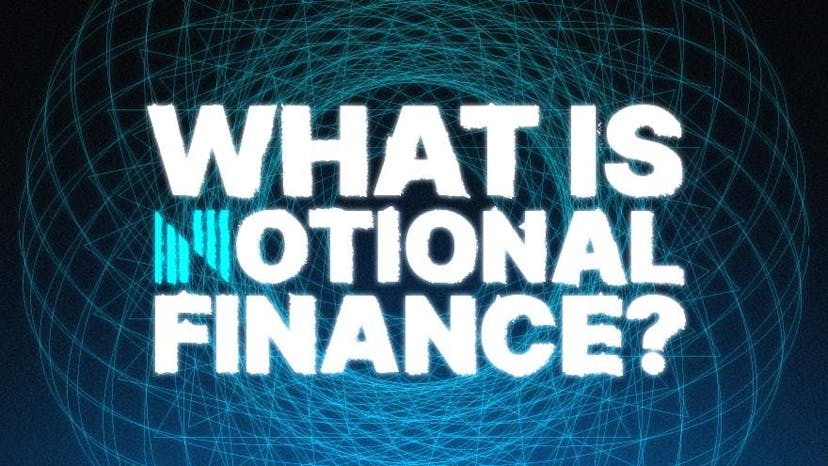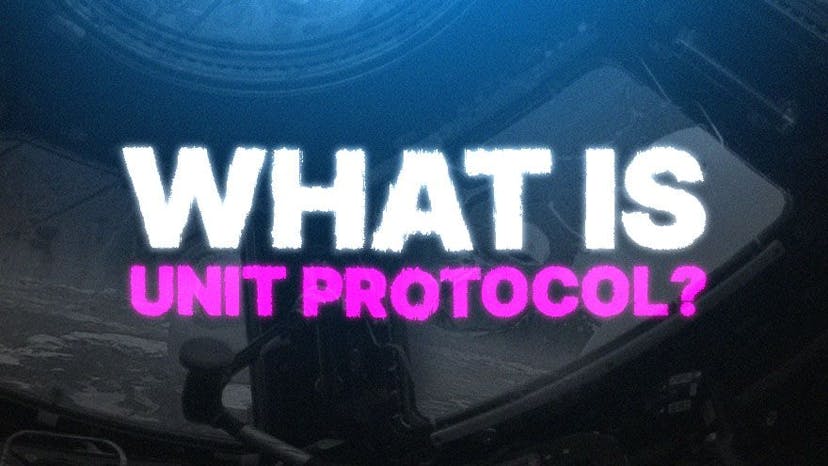What is Notional Finance?
A Primer on a DeFi Take on Fixed Interest Rates
By: Rahul Nambiampurath • Loading...
Explainers
Notional Finance is an Ethereum-based lending and borrowing application. Notional has a couple of tricks up its DeFi sleeve to automate permissionless fixed-term loans as well as fixed-term interest rates.
Notional innovation in the DeFi space comes from its financial primitive dubbed fCash. Together with Notional’s NOTE token, the dApp minimizes debt repayment. Before we dive in, let’s see why not all interest rates are the same.
Benefits of Drawbacks of Fixed Interest Rates
As their name suggests, fixed interest rates are set by a lender and accepted by a borrower for the term of a loan. For borrowers, this can be a boon if rates rise — they pocket savings with a lower rate.
But this can backfire in periods when interest rates are high. If a borrower locks in a high rate on a mortgage or a loan and then benchmark rates fall, they may wind up paying far more than they would have if they could lower the rates on their loans accordingly.
That’s why lenders also offer adjustable rate loans and mortgages. Agian, this is great for borrowers who lock in high rates and then benefit as they fall. But if they do the opposite — take out debt at a low rate — rates may rise and make the loans more expensive to service.
How Does Notional Finance Work?
Notional Finance has its own take on fixed rates. Like Aave, Notional Finance is your standard Ethereum-centric lending dApp. Its key differentiating feature is fixed-term borrowing, thanks to the novel implementation of fCash. Before we explain fCash, let’s first remind ourselves how DeFi lending works:
- In DeFi, there is no market maker providing liquidity for the loans. Instead, users themselves become makers or liquidity providers (LPs).
- LPs deposit their crypto/stablecoin assets into liquidity pools, by connecting to the dApp with a non-custodial wallet like MetaMask or Block Wallet.
- Liquidity pools are smart contracts, serving as automated governance that determines conditions under which borrowers can drain the pool’s liquidity for a loan. Such conditions are: collateral’s loan-to-value ratio % depending on the token type, borrowing rate %, and loan maturity date.
- In DeFi, there is no unsecured loan (without a collateral), because there is no human element to check for the borrower’s creditworthiness.
- To receive a loan, borrowers deposit their own funds into a smart contract as a collateral. In exchange, the LPs receive an interest rate, making them into individualized, anonymous, virtual banks.
Notional Finance follows this basic DeFi lending/borrowing principle. The novelty comes with Notional’s dual liquidity pools, holding DAI on one side, and fDAI on the other side, representing fCash.
Source: Notional Finance
As of November 2022, Notional had a total loan volume of $659M, covering over 1,000 active users. The lending platform supports four types of assets for both lending and borrowing: USDC, WBTC, DAI, and ETH. But how does fCash fit into this model?
Notional fCash
fCash allows users to move capital through time. Let’s say you want to borrow $10,000 worth of DAI from Notional. Accounting for the interest rate, you agree to pay 10,500 DAI at a future date, typically between 3 weeks to one year for stablecoins and up to six months for ETH and WBTC.
The borrower then receives the tokenized form of that debt obligation, expressed as -10,500 fCash, accounting for that future payment and redeemable for 10,500 DAI on maturity date.
Source: Notional Finance
This is why there is a prefix “f” before Cash, wherein the value difference between DAI and fDAI is the accumulated interest rate. In other words, when borrowers deposit their collateral, they mint fCash tokens, which lenders receive as fCash.
In turn, these fCash tokens can be exchanged for other cryptocurrency, such as ETH, WBTC, USDC, or DAI. At the end of the line, borrowers receive the asset they want, keeping in mind to pay it off on maturity date.

Pudgy Penguins and Doodles Seek Alternatives to Ethereum
Top NFT Collections Fear Return of High Gas Fees and Look to Layer 1s
If they fail to repay the loan, borrowers risk liquidation of their overcollateralized assets. Of course, because of their stable nature, stablecoins have a lower overcollateralization at 120%, while WBTC and ETH have an overcollateralization level at 150%.
Outside of repaying the loan, borrowers can extend the future maturity date, which is called rolling on their contract.
Notional’s nTokens and cTokens
An alternative way to provide liquidity is through nTokens. When lenders provide liquidity into liquidity pools, they receive nTokens as ERC-20 assets. They represent tokenized maturities for the deposited cryptocurrency, redeemable for “a share of Notional’s total liquidity in a given currency across all active maturities.”
For example, if LP provided DAI stablecoin into a liquidity pool, they receive nDAI. Likewise, for nETH and nUSDC.
nTokens themselves can be used as a collateral for borrowing. Furthermore, LPs earn passive income with their nTokens for simply holding them, on trading fees (when people borrow their assets), on fCash interest rate, and when receiving NOTE incentives.
Native to the Compound protocol, Notional integrated cTokens as interest-bearing assets. As such, they increase returns for liquidity providers in a similar manner as nTokens. In Notional V1, only fCash was used as a settlement asset.
Source: Notional Finance
This changed in V2, wherein cToken, such as cUSDC or cDAI, represents settlement upon maturity. This division enabled Notional to increase LPs returns as they deposit cTokens into liquidity pools instead of the underlying currency.
Likewise, cTokens enable fixed rate loans to accumulate variable cToken rate as soon as it reaches maturity.
Notional NOTE Token
The lending protocol has community governance with NOTE tokens serving as proportional voting power. As a monetizing mechanism, Notional users can stake NOTE tokens, which are then converted into 80/20 NOTE/ETH Balancer LP tokens.
Source: Notional Finance
In return, stakers receive sNOTE tokens as rewards, redeemable for Balancer LP tokens. Although this can change with community voting, on a weekly basis, Notional allocated 30,000 NOTE tokens to incentives sNOTE holders.
The total NOTE supply is 100M, nearly all of them in circulation. In the case of unexpected liquidations, Notional will tap into NOTE reserves to pay back lenders.
Notional Finance Founders
Teddy Woodward and Jeff Wu conceived Notional Finance in November 2019 at a hackathon event in San Francisco. In January 2020, they launched the project on Ethereum.
As of April 2021, they raised $11.3M across three funding rounds, mostly supplied by Pantera Capital, Polychain, and Coinbase Ventures.
Series Disclaimer:
This series article is intended for general guidance and information purposes only for beginners participating in cryptocurrencies and DeFi. The contents of this article are not to be construed as legal, business, investment, or tax advice. You should consult with your advisors for all legal, business, investment, and tax implications and advice. The Defiant is not responsible for any lost funds. Please use your best judgment and practice due diligence before interacting with smart contracts.
Advertisement
Get the best of The Defiant directly in your inbox 💌
Know what matters in Web3 with The Defiant Daily newsletter, every weekday
90k+ investors informed every day. Unsubscribe anytime.
